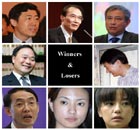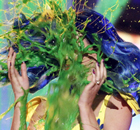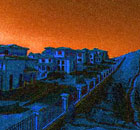Opinion
Arts market: A bubble in its infancy?
By Zhu Linyong (China Daily)
Updated: 2010-04-02 16:08
 |
Large Medium Small |
The country's rapidly growing class of brash tycoons is spending money on fine art and antiques that several decades ago were regarded as useless remains of a feudal past.
Last year, several price records were broken at auctions of Chinese arts, especially traditional arts and crafts.
At a Sotheby's auction in Hong Kong last October, an unidentified Shanghai businessman - who turned out to be mainland stock investor Liu Yiqian - paid an astonishing HK$85.7 million for a rare red saddlewood dragon throne from the period of Emperor Qianlong in the middle Qing Dynasty (1644-1911), a record auction price for a piece of Chinese furniture.
| ||||
Celebrities such as Liu, film director Feng Xiaogang, movie investor Wang Zhongjun, and best-selling novelist Hai Yan, have appeared on magazines or TV talk shows, sharing their antique-collection stories with readers and viewers.
This buying trend was unimaginable only a few years ago.
Official statistics show that the country has around a million super-wealthy and some 13-15 million people (1 percent of the population) best described as middle- to upper-income consumers.
This emerging class, however, was once considered unscrupulous figures who tended to be corrupt, to have made their riches on the backs of toiling workers. People of this class were said to have accumulated their staggering wealth by cutting corners and taking advantage of loopholes.
And only two or three years ago, local media were bandwagon jumping on the widespread hatred toward the newly rich.
Estimates show that Chinese arts markets, auctions in particular, grew by 152 percent from 2001-2008. The local market is expected to become the largest in the world and will hit 500 billion yuan in annual income by 2020.
This could have not been achieved without the wallets of the newly rich and of the middle class.
As the stock market and property sector become more and more risky, the arts market has been grabbing the attention of shrewd investors.
In recent years, the gap between low-end and high-end art markets has widened.
In 2009, the record-breaking prices were created despite a decline in overall transaction volumes from previous years. In other words, stellar works of art have significantly contributed to overall revenues.
Some critics have warned that the continued influx of money into the arts market by speculators, many of whom are believed to be from the newly rich, has pushed prices up, creating bubbles of speculation and potentially putting the market in harm's way.
But the money always goes where the profits are. And with more and more rich investors coming in and becoming obsessed with antiques, the market will gradually stabilize.
One problem is that many of the wealthy are buying art not out of genuine understanding of art but to show off, taking the works as status symbols like other luxury goods.
Still, a considerable number of affluent collectors are one-off buyers and the idea of spending years to build a collection is still quite foreign.
To guide people who are buying works of art, major galleries and auction houses are taking up the role of educators and custodians of what is effectively a frontier market.
For instance, China Guardian Auctions and China Poly International Auction, two giants in the local markets, arrange frequent lectures and exhibition tours of key lots in inland cities such as Taiyuan, Chengdu, and Wuhan.
During an interview, Wang Gang, actor, TV presenter and collector of antiques, revealed a long list of celebrities who are collecting traditional Chinese art.
"First of all, collecting is a personal hobby. Investment is not my focus," Wang said.
But I believe that for most collectors who have turned rich overnight, the art market, especially the market for traditional and classic art, is a safety net for their money.
In the long run, participation from the newly rich will boost the local art market immensely.













